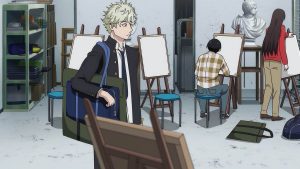 There’s a weird phenomenon with discussion of Blue Period. People talk about stuff that already happened as if it were new, and I immediately think “wait, that was last week” before I remember the Netflix effect. It’s almost like seeing the lightning before you hear the thunder. The same thing will happen with Komi-san of course, though I can’t see that mattering as much to me. Both these shows have generated as much buzz as any new anime this season, but so much of the spark is missing from the discussion because of Netflix’ stubborn indifference to understanding anime audiences. It’s a real shame.
There’s a weird phenomenon with discussion of Blue Period. People talk about stuff that already happened as if it were new, and I immediately think “wait, that was last week” before I remember the Netflix effect. It’s almost like seeing the lightning before you hear the thunder. The same thing will happen with Komi-san of course, though I can’t see that mattering as much to me. Both these shows have generated as much buzz as any new anime this season, but so much of the spark is missing from the discussion because of Netflix’ stubborn indifference to understanding anime audiences. It’s a real shame.
 When I look at Blue Period I’m actually surprised it’s as popular as it is (the manga sells very well indeed). This is a series that’s very demanding, quite frankly. It really trusts its audience and while I love that about it, series that do that don’t tend to fare very well commercially these days. That sort if thing is obviously a tougher sell in anime than manga, so we’ll see how the series does.
When I look at Blue Period I’m actually surprised it’s as popular as it is (the manga sells very well indeed). This is a series that’s very demanding, quite frankly. It really trusts its audience and while I love that about it, series that do that don’t tend to fare very well commercially these days. That sort if thing is obviously a tougher sell in anime than manga, so we’ll see how the series does.
 I’m aware while watching that things are moving pretty quickly, but that’s not the same as saying they feel rushed. The adaptation seems to be covering a lot of material but the individual moments are getting the attention they deserve. I also feel a certain frustration because there are elements of Yaguchi’s journey that I can’t totally appreciate, because I have no intrinsic feel for painting or the visual arts. But to an extent I think writing is similar – we copy that which we like as we struggle to find our own voice. Sometimes for our entire lives…
I’m aware while watching that things are moving pretty quickly, but that’s not the same as saying they feel rushed. The adaptation seems to be covering a lot of material but the individual moments are getting the attention they deserve. I also feel a certain frustration because there are elements of Yaguchi’s journey that I can’t totally appreciate, because I have no intrinsic feel for painting or the visual arts. But to an extent I think writing is similar – we copy that which we like as we struggle to find our own voice. Sometimes for our entire lives…
 Yaguchi’s frustrations are coming through quite clearly. It’s important to remember that he came to art quite late in life, but few things are harder for kids his age than showing patience. He is indeed greedy, as Yuka says – but that greed is not a bad thing. It’s what drives him to try and catch up. The first day at art school brings a variety of new colleagues and they bring new frustrations. Takahashi Yotasuke (Yamashita Daiki, in an atypical performance), is someone Yaguchi immediately labels as a genius – forgetting a lesson he’s already learned, that this is just an easy way to dismiss a person’s commitment and dedication.
Yaguchi’s frustrations are coming through quite clearly. It’s important to remember that he came to art quite late in life, but few things are harder for kids his age than showing patience. He is indeed greedy, as Yuka says – but that greed is not a bad thing. It’s what drives him to try and catch up. The first day at art school brings a variety of new colleagues and they bring new frustrations. Takahashi Yotasuke (Yamashita Daiki, in an atypical performance), is someone Yaguchi immediately labels as a genius – forgetting a lesson he’s already learned, that this is just an easy way to dismiss a person’s commitment and dedication.
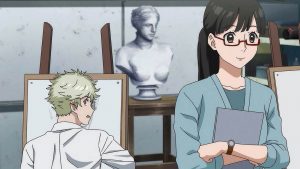 Takahashi-kun is indeed a prodigy, far advanced from where Yaguchi is. He’s also not especially social, either when it comes to Yaguchi or his classmate Hashida Haruka (Kawanishi Kengo). Hashida is a free spirit, at least on the surface – uninhibited in his appearance, his manner, and his art. In my experience that’s usually a cover, but we’ll see where it goes. The three form an unlikely trio as Yaguchi struggles to find an identity as an artist and instinctively latches onto Takahashi as a pathway to understanding what currently eludes him. His new teacher Ooba-san (Kazu Yuki) does her best to encourage Yaguchi while making it clear that he’s missing something vital, and as constructed, aiming way too high with Geidai.
Takahashi-kun is indeed a prodigy, far advanced from where Yaguchi is. He’s also not especially social, either when it comes to Yaguchi or his classmate Hashida Haruka (Kawanishi Kengo). Hashida is a free spirit, at least on the surface – uninhibited in his appearance, his manner, and his art. In my experience that’s usually a cover, but we’ll see where it goes. The three form an unlikely trio as Yaguchi struggles to find an identity as an artist and instinctively latches onto Takahashi as a pathway to understanding what currently eludes him. His new teacher Ooba-san (Kazu Yuki) does her best to encourage Yaguchi while making it clear that he’s missing something vital, and as constructed, aiming way too high with Geidai.
 Ooba-sensei gives the lad some very good advice – his first goal should be to figure out exactly what he likes. This is important for a myriad of reasons (not least that there are going to be underlying reasons why certain artists and styles will resonate). A trip to the art museum with his two new friends is a reminder of just how far behind the curve Yaguchi is, but nevertheless instructive. In a forest of Vermeers and Picassos, it seems to be Edgar Degas that especially catches his eye – I’ll be interested to see that thread followed up in future episodes.
Ooba-sensei gives the lad some very good advice – his first goal should be to figure out exactly what he likes. This is important for a myriad of reasons (not least that there are going to be underlying reasons why certain artists and styles will resonate). A trip to the art museum with his two new friends is a reminder of just how far behind the curve Yaguchi is, but nevertheless instructive. In a forest of Vermeers and Picassos, it seems to be Edgar Degas that especially catches his eye – I’ll be interested to see that thread followed up in future episodes.
 Meanwhile, Yuka is quite the topic of discussion at art school, and almost immediately starts dating a handsome sempai. This comes to an end when Yuka reveals the truth about their gender – and the way the sempai breaks it off with kindness just makes it worse. This is an interesting passage – it’s clear Ryuji and Yaguchi have a shared history but not what that history is, and Yaguchi is clearly trying to be an understanding friend but lacking the necessary ability to do it. Yaguchi at least wants to do the right thing here, which I think counts for a lot with Yuka even if he can’t quite pull it off.
Meanwhile, Yuka is quite the topic of discussion at art school, and almost immediately starts dating a handsome sempai. This comes to an end when Yuka reveals the truth about their gender – and the way the sempai breaks it off with kindness just makes it worse. This is an interesting passage – it’s clear Ryuji and Yaguchi have a shared history but not what that history is, and Yaguchi is clearly trying to be an understanding friend but lacking the necessary ability to do it. Yaguchi at least wants to do the right thing here, which I think counts for a lot with Yuka even if he can’t quite pull it off.
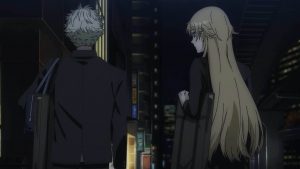 The takeaway from all this for me is that what Yaguchi and Yuka are going through – both as artists and as human beings – is a perfectly normal part of adolescence. Self-discovery is a long process and rarely smooth sailing, and while there’s hardly anything extraordinary about it what’s extraordinary is the way Blue Period presents it without relying on cliches and tropes. Again, it comes down to respecting the audience – a bet that rarely pays off for anime, but one which should always be applauded whenever we see it.
The takeaway from all this for me is that what Yaguchi and Yuka are going through – both as artists and as human beings – is a perfectly normal part of adolescence. Self-discovery is a long process and rarely smooth sailing, and while there’s hardly anything extraordinary about it what’s extraordinary is the way Blue Period presents it without relying on cliches and tropes. Again, it comes down to respecting the audience – a bet that rarely pays off for anime, but one which should always be applauded whenever we see it.



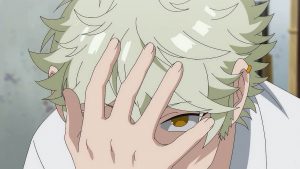
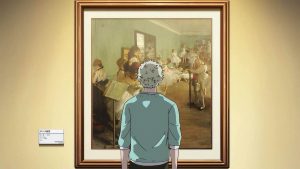
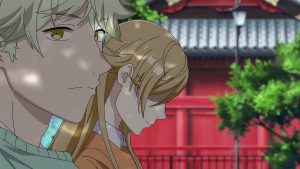
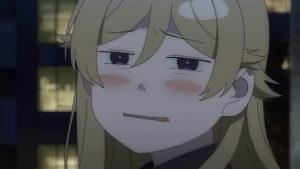

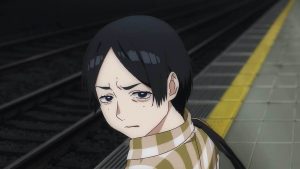

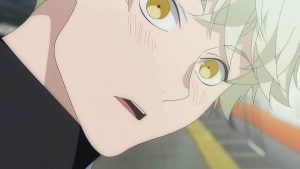
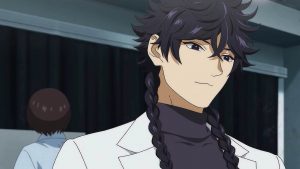


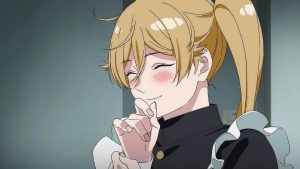
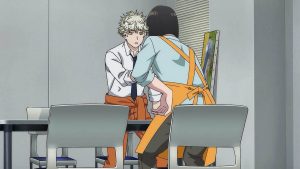

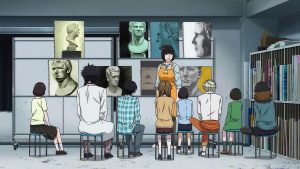

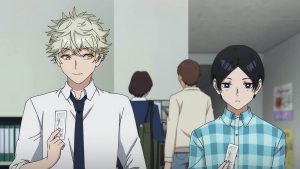

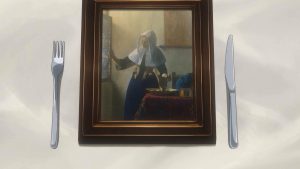
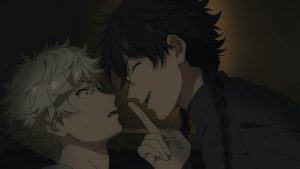


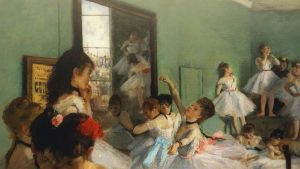

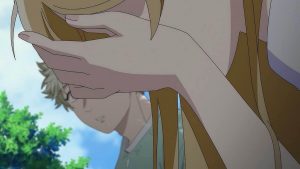
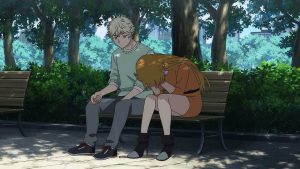

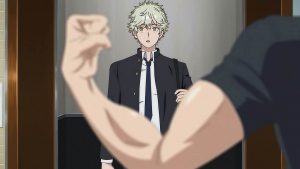
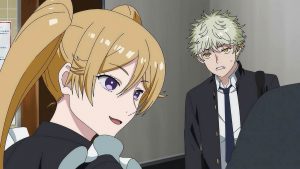

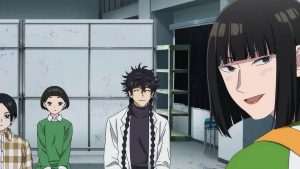

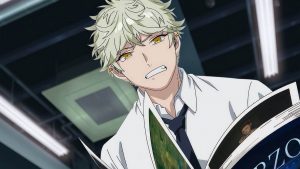

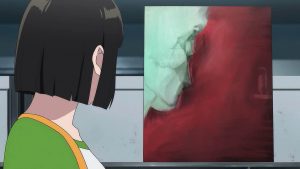
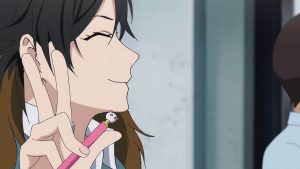
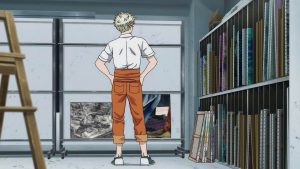


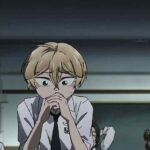
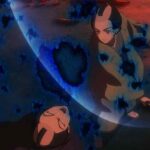
leongsh
October 10, 2021 at 6:51 pmThe manga is refreshingly honest. That’s why it is doing well despite the challenging material it tackles. It is a seinen-targeted series.
This episode onwards is actually a good primer for those that are fairly new to art appreciation, just like the series itself. I’m not an arts student nor a student of the arts. However, I did find the manga was close to how my understanding of art developed for me in my younger days despite my lack of involvement in the arts except as a spectator/consumer. I take the opportunity to visit art museums whenever I travel – especially solo. Most of my travel friends and family would at best be interested in cultural and historical museums but art museums, they will almost always tell me that they would meet up with me elsewhere later.
I really want Blue Period’s bet to pay off.
Guardian Enzo
October 10, 2021 at 7:34 pmWell, me too. Especially as it’s seemingly only getting 12 episodes (with some rumors as few as 9).